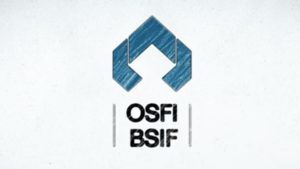Qualifying Ratios

In Canada, all mortgages need to qualify under the B-20 stress test. The stress test is simply a set of two qualifying ratios that ensure that a borrower has the financial capacity to weather an increase in interest rates. Under the current B-20 regulations, the qualifying rate is set at the higher of 5.25% or the contract rate plus 2%. In today’s market this means that borrowers are qualifying as if the interest rate was at least 6.44%
Gross Debt Servicing
The first qualifying ratio is gross debt servicing. Real Estate professionals sometimes refer to this with the shorthand of PITH (Principal, Interest, Taxes, Heat). In other words, the mortgage payment, 1/12th of the property taxes and at least $100 for heat. Gross debt servicing can not exceed 39% of monthly pre-tax income.
Total Debt Servicing
The second qualifying ratio is total debt servicing. Total Debt Servicing is PITH, plus car payments, plus 3% of any credit card debt, plus 1% of any outstanding student loans. Total debt servicing can not be more than 44% of monthly pre-tax income. Often, car payments are a limiting factor. Fortunately, I have a service that can help reduce car payments. They do this for late model cars by spreading out the payments over a longer period of time. Alternatively, it can also make sense to reduce one’s down payment in exchange for paying down debt. This can help maximize the amount of house that one can qualify for.
Conclusion
When the OSFI first introduced the B-20 qualifying ratios in 2017, many saw this as a hindrance to home ownership. However, as interest rates have increased over the last year, the stress test is actually helping ensure that borrowers have the capacity to withstand the increase. Because borrowers qualified at an interest rate of at least 5.25%, they have the capacity to pay higher interest rates. Unfortunately, variable rates are for the first time in 30 years higher than fixed rates. The best variable rates currently available are Prime -0.9% which amounts to 5.8%. This is greater than the interest rate at which borrowers originally qualified, but not terribly out of line. All of this means that because of the stress test, borrowers might not be in great shape, but should be able to weather this current higher rate environment.
